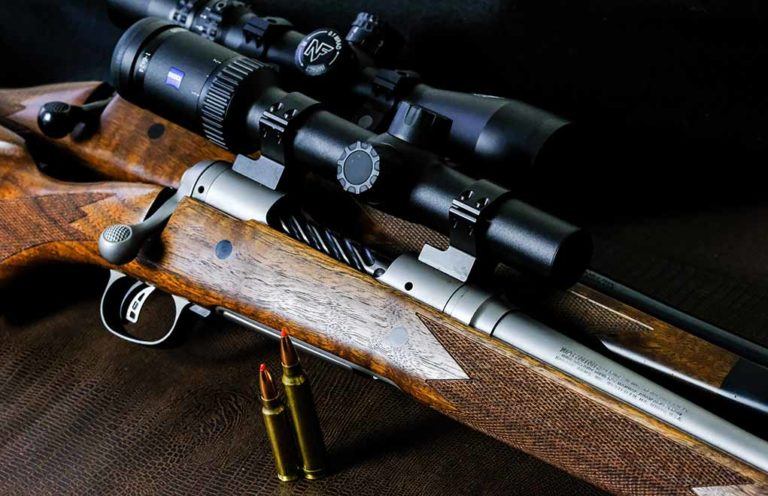
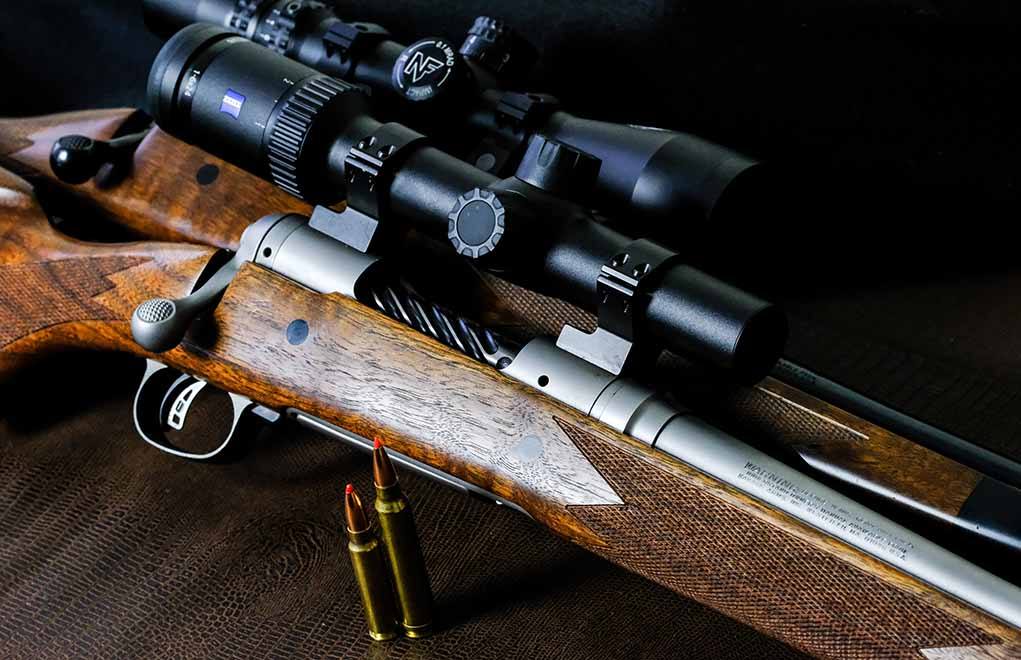
From 1920 until 1963, .300 Savage owners never had to wonder about the .300 Winchester Magnum. After 1963, they did. Or did they?
Hunting, How Do The .300 Win. Mag. And .300 Savage Measure Up Againt Each Other:
- Under 200 yards the cartridge have similar results hunting.
- Take a 600-yard poke at an elk, you want a .300 Winchester Magnum at your shoulder.
- The .300 Winchester Magnum has the ability to deliver around 40-percent more energy than the .300 Savage.
- Overall, the .300 Savage is more pleasent to shoot due to its mild recoil.
Yes, the .300 Win. Mag. can, and does, take a 165-grain bullet and push it more than 550 fps faster than the .300 Savage—a short-action cartridge old enough to be going through a mid-life crisis when the Winchester .30-caliber magnum was born.
To most .300 Savage owners, however, it simply doesn’t matter. Not even a little bit. Why?
Because, generally speaking, .300 Savage shooters aren’t interested in crunching numbers; they’re focused on crunching bones. Pedestrian ballistics aside, from 1920, when the .300 Savage was born, all the way until the all-world .375 H&H-inspired .300 Winchester Magnum debuted in 1963—and every day since then—the .300 Savage continues to work on deer, elk, moose, bears and everything in between.
It’s Not About the Cartridge
Despite the fact that I’m about to ink a thousand or so more words debating the merits of both cartridges, you’ll likely come to the same conclusion I did. Ultimately, the choice between a .300 Savage and a .300 Winchester Magnum isn’t about which cartridge works better: They both give hunters an honest day’s work for an honest day’s wage. No; your answer to the .300 Savage versus .300 Winchester Magnum question won’t tell us anything we don’t already know about either of these two proven cartridges. It will tell us a bit more about you though.
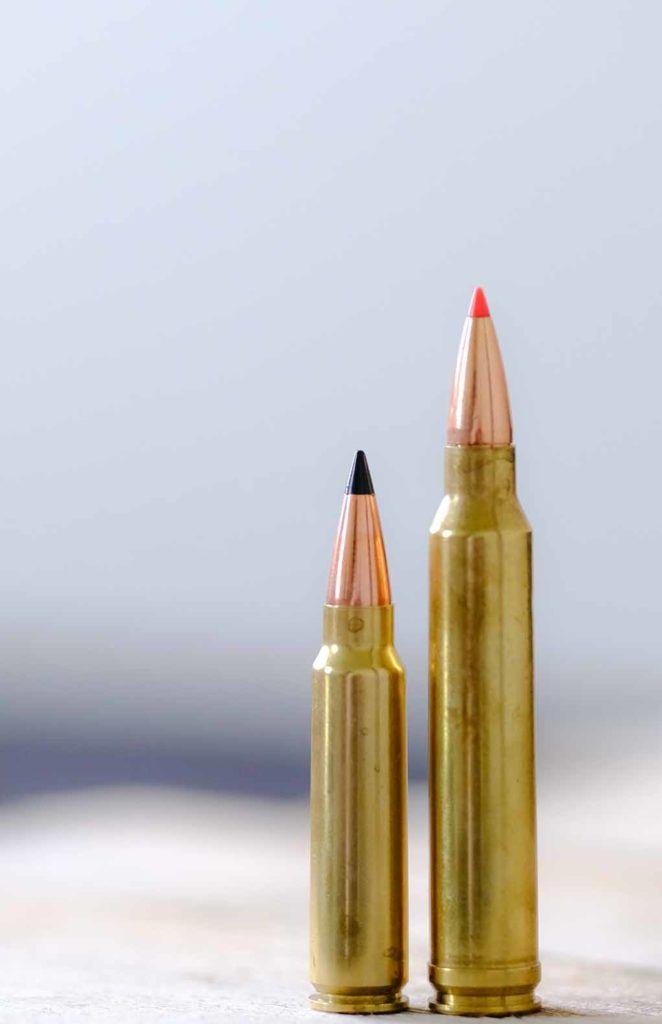
Is the .300 Savage going to anchor that 6×6 bull elk sitting out at 600 yards for you like a .300 Winchester Magnum can? No. It’s not, but a .300 Savage shooter isn’t the hunter who wants to take that shot—with any rifle—in the first place. You see, the .300 Savage has always been a good enough cartridge for a good enough hunter. The .300 Winchester Magnum is just better. What you have to ask yourself is, Am I a cunning enough hunter, a patient enough hunter, a disciplined enough hunter to use a .300 Savage?
Allow me to get a little more honest with you: Under 200 yards, is there anything a .300 Winchester Magnum does on wild game that a .300 Savage can’t? Nope. But, don’t take my gun writer-biased word for it. Listen to the answer Remington ballistics expert Nick Sachse gave when I asked him.
“Nick, under 200 yards, is there anything a .300 Win Mag does on wild game that a .300 Savage can’t?”
“Not anything useful I can think of,” said the man Remington pays to think about ballistics all day. He added a little Southern perspective to drive home his point: “It might pass through three pigs lined up in a row instead of just two.”

Nick speaks the truth. I took a Savage bolt-action rifle to South Africa last year and killed a red hartebeest, duiker and quite a few warthogs with it using rather simple Federal 180-grain soft-point bullets. Of course, I limited my shots to 200 yards or under, but it wasn’t because of the cartridge. My backup rifle was a 24-inch 6.5×55 Swede, which could put plains game critters to sleep at distances well beyond my shooting capability. No; the 200-yard limit was because I told my PH I wanted to hunt as closely as possible on my safari, even if it meant failure.
Results, Indeed
Still, not every hunter likes limits; and not every ballistics expert feels the same way about which cartridge they like.
Go Big With These Ammo Articles:
- Does The .357 Magnum Rifle Reign Supreme?
- .500 Linebaugh: Taking Revolver Cartridges To The Next Level
- Big-Bore Lever-Actions: Steel Henry .45-70 Is Golden
- Gun Review: Magnum Research BFR
.444 Marlin - Ruger 77/44: A Masterful .44 Magnum Rifle
Barnes bullet guru Michael Painter answered the same question as Nick Sachse did—but from a different perspective.
“Yes, the .300 Win. Mag. transfers substantially more energy,” he said. “For example, the Remington factory Core Lokt ammunition in .300 Savage would deliver approximately 1,462 foot-pounds of energy, whereas the same weight of bullet loaded in .300 Win. Mag. at 200 yards delivers around 2,311 foot-pounds of energy. In my hunting experience, there’s no such thing as ‘too dead.’”
Still, speed and power aren’t everything (Uh, yes, yes, it is, Jay).
Decreased .300 Savage Recoil
Despite the simple fact that a .300 Winchester Magnum can, and does, shoot faster, farther and hit harder than the .300 Savage, it doesn’t win in every category critical to successful shooting.
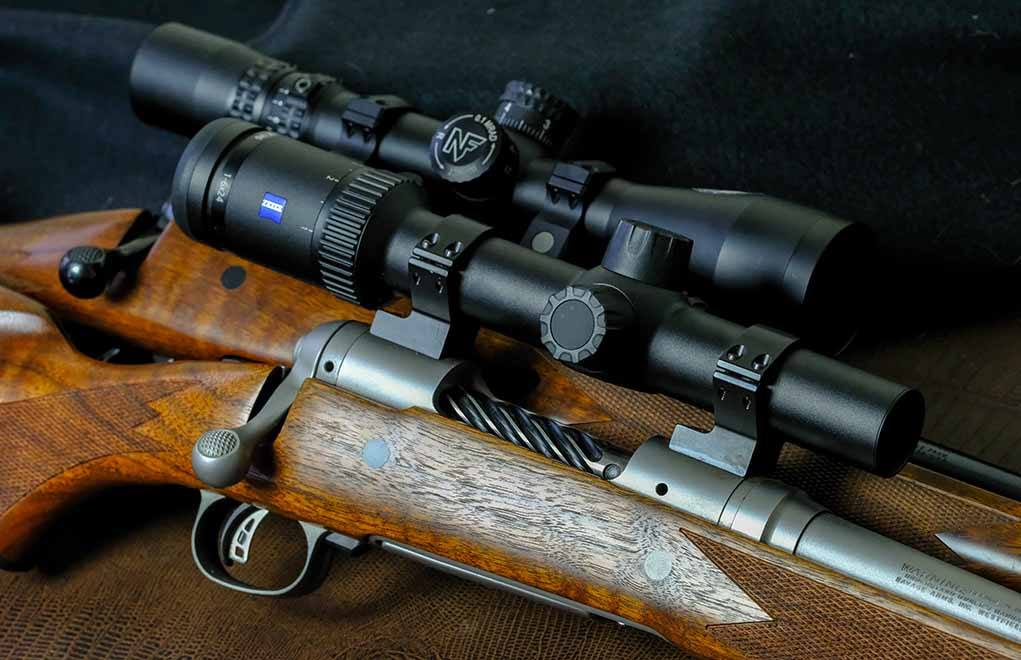
According to Sachse, “Delivering less recoil is one thing the .300 Savage can do, which results in a more pleasant shooting experience; and, most importantly, it decreases the probability of a flinch in anticipation of recoil—which can, of course, make all the difference when it comes to good shot placement. It can still get the job done very well inside 300 yards with proper bullet selection.”
We can all agree that no matter how fantastic your rifle, cartridge and optic are, if you can’t—or won’t—shoot your rifle accurately because you’re afraid it’s going to mule-kick you, there’s no bullet on Earth that works when you miss.
Speaking of Accurate Shooting
I hear you .300 Winchester Magnum fanboys all hollering about shooting much, much farther than 200 to 300 yards. So, for hunters who can’t get closer, or won’t (yes, I said it), the .300 Winchester Magnum can do things the .300 Savage shouldn’t.
Sachse spoke up for the marvelous .300 Winchester Magnum. “Past 300 yards or so, the .300 Win. Mag. can deliver the energy, accuracy and trajectory vital to increasing the probability of a hit in the vitals and delivering the level of bullet terminal performance needed at those extended ranges for a clean kill.”
Truth be told, the .300 Winchester Magnum is one of the most accurate long-range cartridges ever created. As a result, it has been one of the top choices for 1,000-yard competition shooters ever since it was developed.
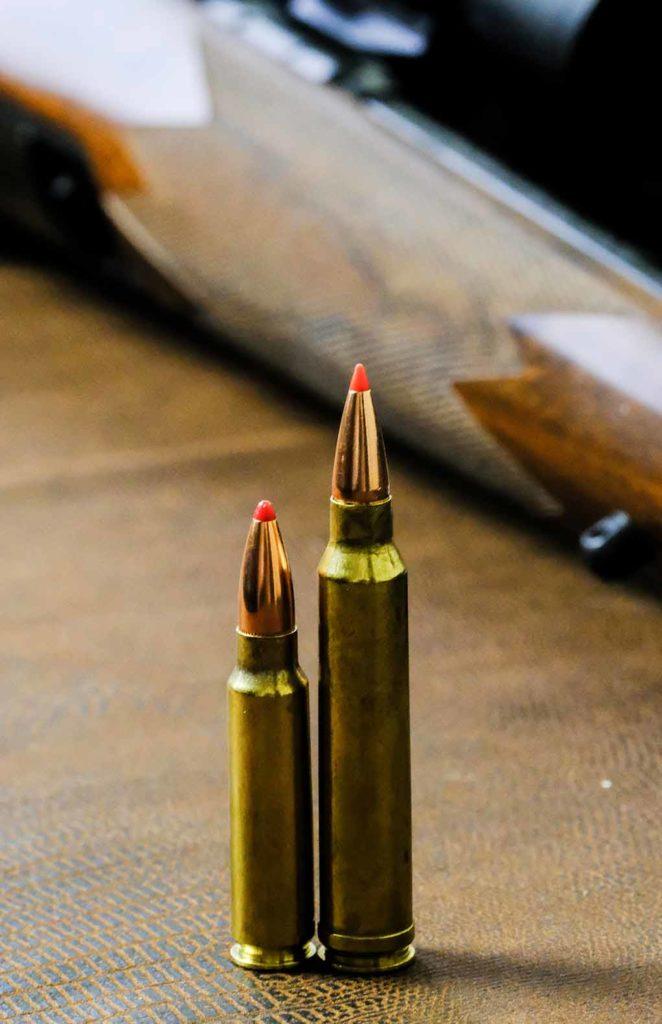
Furthermore, there are countless law enforcement and military agencies around the world that insist upon the .300 Winchester Magnum as their cartridge-of-persuasion when human lives are on the line. Finland, Germany, Great Britain and the United States all have .300 Winchester Magnum sniper rifles in their batteries of long-range tools. No one is using the .300 Savage as a sniper rifle these days (although the .308 Winchester/7.62x51mm NATO, which was a direct result of the genius of the .300 Savage case design, is one of the most popular and beloved military cartridges of all time).
Perennial Favorite
The .300 Winchester Magnum has earned a reputation for being accurate and always delivering enough terminal performance to complete its mission, whether it’s punching tight groups at a 1,000-yard rifle match, putting down a trophy bull elk well past .300 Savage ranges or being the final word whispered by a military sniper to his vanquished foe.
In fact, the .300 Winchester Magnum’s immense popularity gives us another reason to choose it over the .300 Savage.
“An additional reason I would choose the .300 Win. is ammunition availability,” said Painter. “All firearm and ammunition dealers will carry .300 Win. Mag. ammo. Many mom-and-pop shops, gas stations, etc. will also carry .300 Win. Mag. But with the .300 Savage, you won’t be so lucky, and ammo availability will likely be scarce.”
Which Bullet for Which Cartridge?
Outside of how well you can shoot your rifle—regardless of which cartridge you choose—the most influential choice you can make to maximize your success rate with either cartridge comes down to your choice in bullets. Which bullet do you choose for which cartridge?
“The bullet that possesses the accuracy, trajectory and terminal performance needed to effectively harvest the intended target at the intended range is always the best kind,” said Sachse. “To be more specific, with the .300 Savage, and limiting shots to, say, 300 yards or so, BC is less of a factor. So almost any accurate hunting bullet designed to reliably expand and penetrate out to 300 yards, yet not over-expand and under-penetrate at near point-blank range, will suffice. When stepping up to .300 Win. Mag., BC becomes more of a factor on shots beyond 300 yards or so. Thus, that bullet really needs all the terminal performance requirements the .300 Savage-appropriate bullet has, with the added benefit of higher BC (sleeker profiles, boattails, ballistic tips, etc.) for maintaining the flatter trajectory at long range, without blowing up on game up close or penciling through at long range.”
On the Other Hand …
Ultimately, there is no fair comparison between the .300 Savage and the .300 Winchester Magnum. The .300 Savage is a short-action, yes. It kicks a lot less. It kills plenty within its intended range of up to about 300 yards, and it’s accurate enough to hit what you aim at, critter-wise.
On the other hand, the .300 Win. Mag. is a magnum long-action with fire and brimstone at both ends of the rifle. It can, and has, hunted the world’s most dangerous bears, been used to win high-powered rifle matches and saves lives on the battlefield. No elk or moose guide will snicker at your cartridge choice if you bring it into camp, and you’ll find ammo for it just about anywhere you find ammo for anything.
It’s not a fair debate. In fact, people who like to debate .30-caliber cartridges will more likely ponder a .300 Savage versus a .30-30 Winchester or a .300 Winchester Magnum versus a .30-06 Springfield. In the end, hunters who choose the .300 Winchester Magnum will do so because they don’t want to have any doubts about the rifle. Hunters who choose the .300 Savage, however, do so because they don’t want to have any doubt about themselves.
The article originally appeared in the July 2019 issue of Gun Digest the Magazine.

Next Step: Get your FREE Printable Target Pack
Enhance your shooting precision with our 62 MOA Targets, perfect for rifles and handguns. Crafted in collaboration with Storm Tactical for accuracy and versatility.
Subscribe to the Gun Digest email newsletter and get your downloadable target pack sent straight to your inbox. Stay updated with the latest firearms info in the industry.

![Best Concealed Carry Guns In 2025 [Field Tested] Wilson Combat EDC X9S 1](https://gundigest.com/wp-content/uploads/Wilson-Combat-EDC-X9S-1-324x160.jpg)


![Best 9mm Carbine: Affordable PCCs [Tested] Ruger Carbine Shooting](https://gundigest.com/wp-content/uploads/Ruger-Carbine-Shooting-100x70.jpg)
![Best AR-15: Top Options Available Today [Field Tested] Harrington and Richardson PSA XM177E2 feature](https://gundigest.com/wp-content/uploads/Harrington-and-Richardson-PSA-XM177E2-feature-100x70.jpg)

Excellent piece. I carry a .300 Savage pump gun in the deer woods these days cos i loaded for .300 Savage already (my 99’s), it is light to carry and fast to shoot, and the rifling stabilises heavier bullets than the 99’s one-in-twelve which is best at 150 grains, in case an elk pops out. Indeed, cos i don’t have doubts about myself. I don’t think i’ve ever shot a deer over 50 yards in the bush. Not cos i wouldn’t try it, within reason, but because that’s the range – or less – that they all seem to materialize at when i’ve done my job at tracking/stillhunting well. So this is really cool – my .300 Savage is as good or better than the .300 winmag at the ranges i shoot.
Until the grizzlies have gone to bed i carry a .375 H&H loaded with 250 grain coppers (medium-charge handloads) cos i don’t want to have any doubts about my gun. Would i alternatively carry a .300 winmag as a stopping gun in grizzly country? That’s an easy one. *No way.*
The 300 Savage is the daddy of the .308 Winchester. It was THE deer cartridge for the lever action Savage 99. I have a Savage 99 C (“clip”) in .308 so it’s just a tad more powerful than the 300 Savage.
The .300 Win Mag is in another league altogether. Even today it is the most popular .30 caliber rifle cartridge IN THE WORLD.
Today its closest competitor is the new Hornady 300 PRC which is essentially a longer-necked, un-belted .300 Win mag. But the 300 PRC must be good for the US Army to order a bunch ($1.5 M) of Barrett MRAD sniper rifles in 300 PRC! Its longer neck permits longer/heavier .30 caliber bullets to be loaded without having to compress the powder charge. That means bullets like Berger’s 215 and 230 grain hammers. And its lack of a belt permits head spacing off the shoulder, not the belt.
Eric B.
Are you kidding me? Is there nothing new in the shooting world? Or at least newer? I am not about to stomp all over the forgotten but useful rounds the rifles Grand-dad used and handed down to new hunters, far from it. However, get back to comparing like to like, not far-flung stretches like this. I wouldn’t put a .300 win mag in a new deer hunter’s hands but I would consider a 308 or a 300 savage were one available. My first deer rifle was a 7×57 mauser, only reason its a safe queen is lack of more than one load on retail shelves. The biggest advantage the 300 savage has is the projectile diameter, it can be hand loaded forever! And if you are fortunate to have one of the old 1899 rifles, well thats another story in itself!
Interesting, if odd, comparison. The main advantage of the .300 WM is not energy. It’s a much flatter trajectory, which really only matters beyond 300 yards or so. After reading a lot of Ron Spomer’s articles, and lots of hunting stories, I’m convinced that kinetic energy doesn’t kill anything. Catastrophic loss of blood pressure and shock from ruptured blood vessels, damaged vital organs and crushed major nerves is what does the job. One deer hit with a .223 drops like a stone, while another hit with a .338 Winchester Magnum runs 200 yards. Cape buffalo have been dropped with 6.5’s. Rifle hunters seem oblivious to the fact that handgun hunters take the same game, from deer to elephant, using cartridges with ballistics that rifle hunters would consider entirely inadequate. Bottom line, as long as the cartridge you choose has enough momentum to reach your intended target’s vitals, and you select an appropriate bullet, it becomes a matter of learning to stalk within reasonable range, and shot placement, shot placement, shot placement.
You obviously have never field dressed a deer taken by a .300 wm at under 150yds, and noticed the pink mush in the body cavity…